1962-1965 Holden EJ-EH - Buyer's Guide
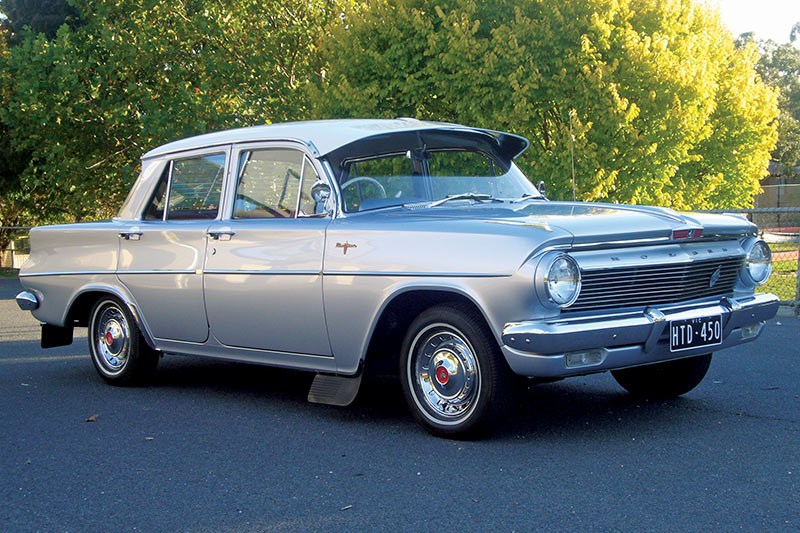


|
These Holdens may be approaching pension age, but they often steal the show at car and coffee gatherings
As mentioned in the Market Review section of this guide, the EJ and EH ranges were in the market for just 30 months (July 1962 until February 1965) and during that time changed the culture of the Holden brand.
No longer would Holdens be burdened with styling discarded years earlier by the Design Office in Detroit. And from mid-1963 when the EH appeared, Holdens would no longer be powered (or underpowered as the case may have been) by engines dating back to the Great Depression.

When the EJ range appeared on 30 July 1962 the difference between it and the horribly outdated EK was immense. Lower, modern and more compact with not a tailfin in sight, the EJ was a head turner and more than 10,000 a month were being immediately sold.
| 2021 Market Review: Holden EJ-EH
Despite its smaller dimensions, the EJ sedan would still accommodate six adult Aussies and a stack of luggage. Those needing more space could choose a station wagon or for extra cargo a utility or panel van.
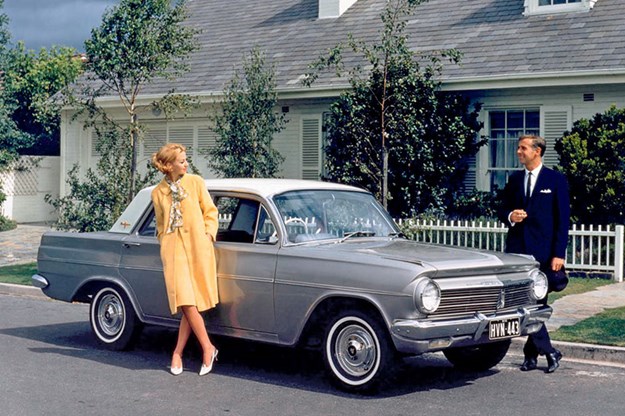
Mechanically not a lot had changed, with a 2.3-litre version of the traditional ‘grey’ Holden motor making just 45kW. Three-on-the-tree manual transmission was standard with Hydramatic as an option, all-drum brakes and leaf rear springs.
There was a new model though; a Premier sedan with leather seats – separate buckets up front, not a bench – metallic paint, white-wall tyres, a heater/demister and carpets.
| Reader Resto: Holden EH Standard
The EJ lasted just 13 months in the market and had obviously been keeping the seat warm for Holden’s more dramatic EH. While the two were not hugely dissimilar in size and shape, the EH was a substantially different car.
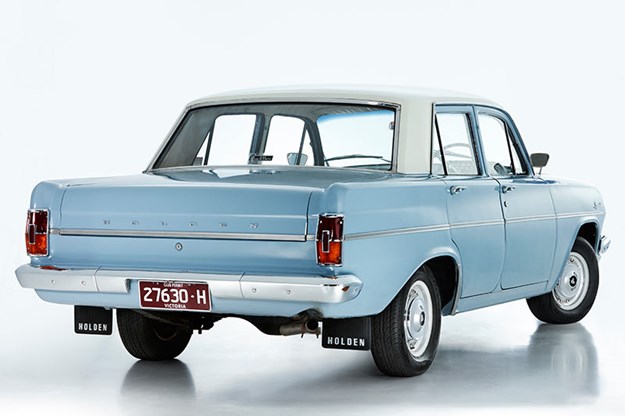
The turret and rear quarters were new, as were the boot lid and rear light clusters. Even the grilles which appeared to be similar in design were quite different when placed side by side.
Big news came when the bonnet was lifted and the engines revealed. They still had six cylinders and a single carburettor but the ‘small’ 149 cubic inch (2.4 litre) version produced 75kW while the 2.9-litre ‘179’ took power to a massive 115bhp or 86kW.
The EH with its more aggressive shape ideally matched the additional performance available from the new ‘red’ motors and not even a disaster at the 1963 Bathurst 500, where the potentially front-running Holdens lost or broke wheels, could dampen demand.
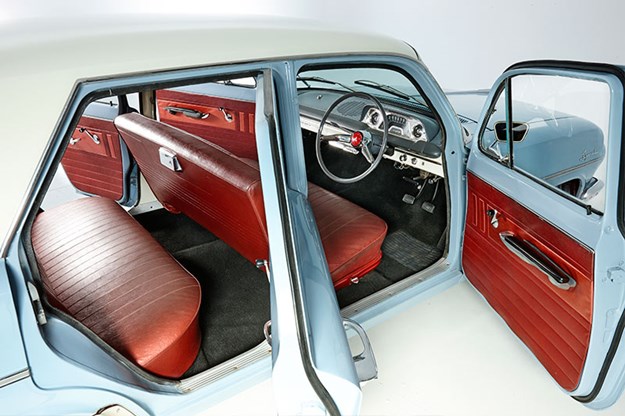
With more than 155,000 EJs and 250,000 EHs sold, lots have survived and demand from the enthusiast market remains strong. However, we aren’t likely to see again the 303 cars surveyed by the 1995 Value Guide or an average value of $4320. Premiers were scarce even then, with only 39 found at an average of $6360.
Move into the current market and a decent EH Special sedan will bring $35,000 – a bit more if it comes with a factory-fit ‘179’ and manual gearbox. EJ Specials in nice condition cost around $10,000 less than a 179 EH. Premiers however are on a much higher price scale.
VALUE RANGE: Holden EH
FAIR: $12,000
GOOD: $25,000
EXCELLENT: $39,000
(Note: exceptional cars & Premiers will demand more)

BUYER'S CHECKLIST
Body & chassis
Old Holdens by this point in their lives will likely have acquired some non-original metal and perhaps other substances in places where rust previously flourished. If the repair was done professionally, several decades might elapse before the job needs doing again but check wheel arches, sills from outside and inside and around the windscreen. Areas which might make these cars costly to repair include a rusted firewall, floors, sub-frame mounting points and rear spring mounts. Tailgate rust affects wagons and commercial models and make sure the hinged window seals properly, so exhaust doesn’t enter the vehicle. Reproduction panels and repair sections are available but new paint is the big cost. Bumpers in good condition are difficult to source. New lights and lenses are available.

Engine & transmission
Holden ‘red six’ engines were made by the millions and replacing a worn motor is no problem at all. Oil smoke from the exhaust and breather, valve and timing chain clatter, piston slap and a dripping rear main bearing seal won’t stop these motors but do make them candidates for a rebuild. If you can strip and reassemble yourself the cost including professional honing, decking and a crank balance can be kept below $3000. A lot of EHs have modified motors and that can be a blessing or a curse depending on the camshaft profile, compression ratio and number of carburettors that need to be kept in tune.The stock three-speed gearbox is a survivor, even when suffering bearing noise, synchro and selector problems. Adaptors exist to easily replace it or the automatic with a Japanese five-speed.
Suspension & brakes
The scary part of driving a Holden of this age is that the bouncing, wandering and indifferent handling are perfectly normal. If you push down hard on a mudguard and the car just keeps bouncing however, the shocks are terminal. Worn components in the front end will highlight typically sloppy steering but full kits of parts including new springs cost less than $1000. Rear spring leaves flatten and crack with age. Cars with after-market front disc brakes are nicer to drive than those with four drums and parts to replace the original braking system are available.
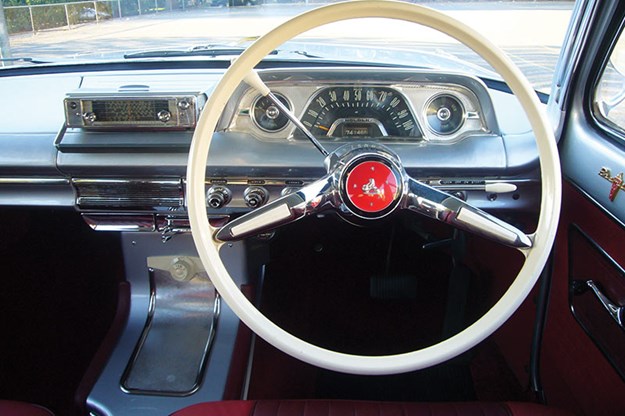
Interior & electrics
Original GM-H vinyl was made to a basic pattern and several suppliers stock reproduction material in a range of colours. Some can even supply replacement leather/vinyl covers for Premier bucket seats. Replacement carpet sets, correct pattern headlining, door cards, handles, window winders and various detail parts are now being made and most aren’t expensive. EJ/EH electrics are simple and a lot of cars have been converted to replace the generator with an alternator.
1962-1965 Holden EJ-EH specs
Number made: 154,811 (EJ) & 256,959 (EH)
Body styles: Steel integrated body/chassis four-door sedan and station wagon, two-door utility and panel van
Engine: 2262, 2442 or 2934cc in-line six with overhead valves and single downdraft carburettor
Power & torque: 86kW @ 4000rpm, 237Nm @ 1600rpm (179)
Performance: 0-100km/h 11.7 seconds, 0-400 metres 18.2 seconds (179 manual)
Transmission: Three-speed manual or automatic
Suspension: Independent with upper and lower control arms, coil springs, anti-roll bar and telescopic shock absorbers (f) Live axle with semi-elliptic springs and telescopic shock absorbers (r)
Brakes: Drum (f) drum (r)
Tyres: 6.40x13 cross-ply
From Unique Cars #450, March 2021
Unique Cars magazine Value Guides
Sell your car for free right here
Get your monthly fix of news, reviews and stories on the greatest cars and minds in the automotive world.
Subscribe

.jpg)














